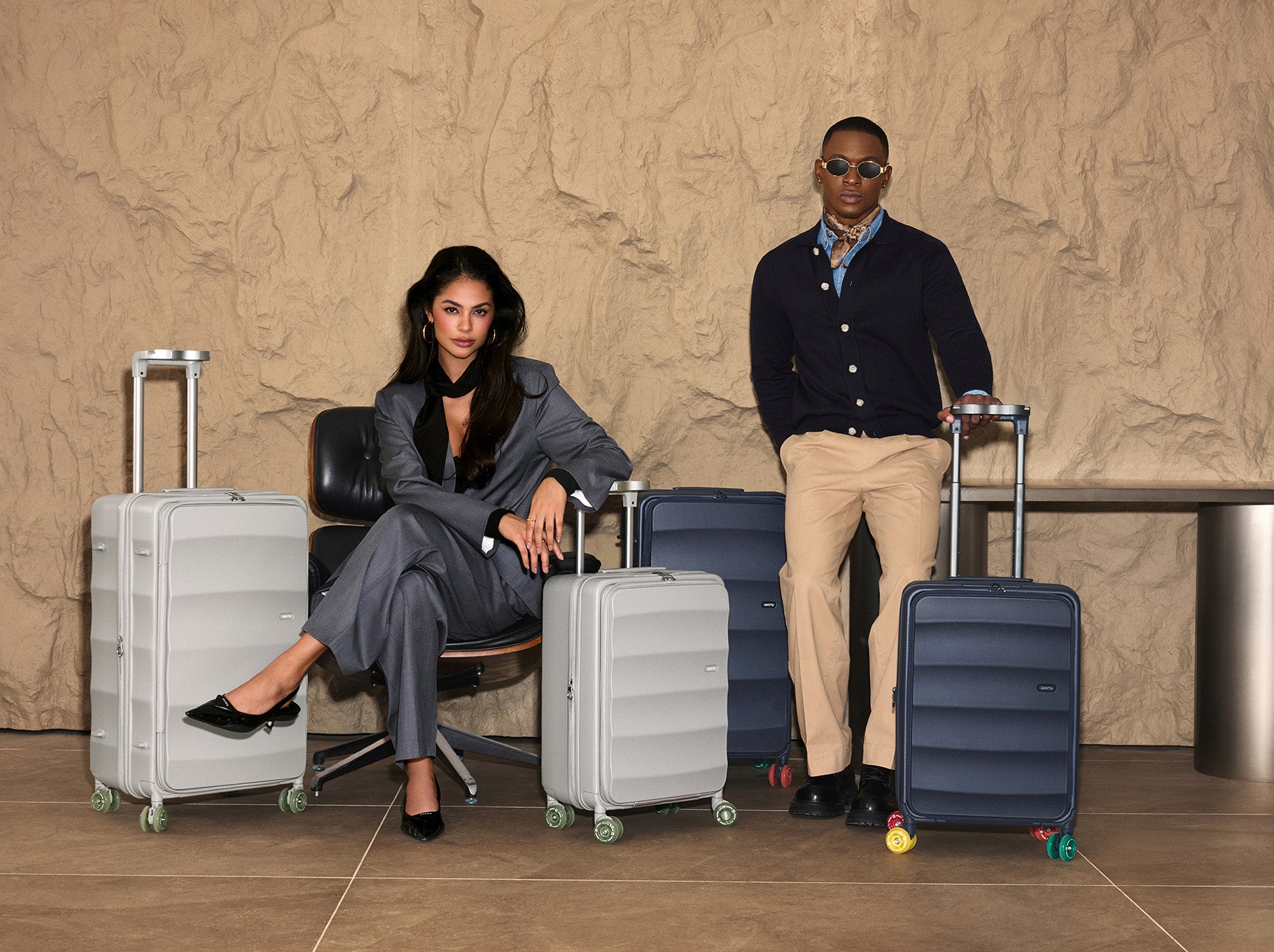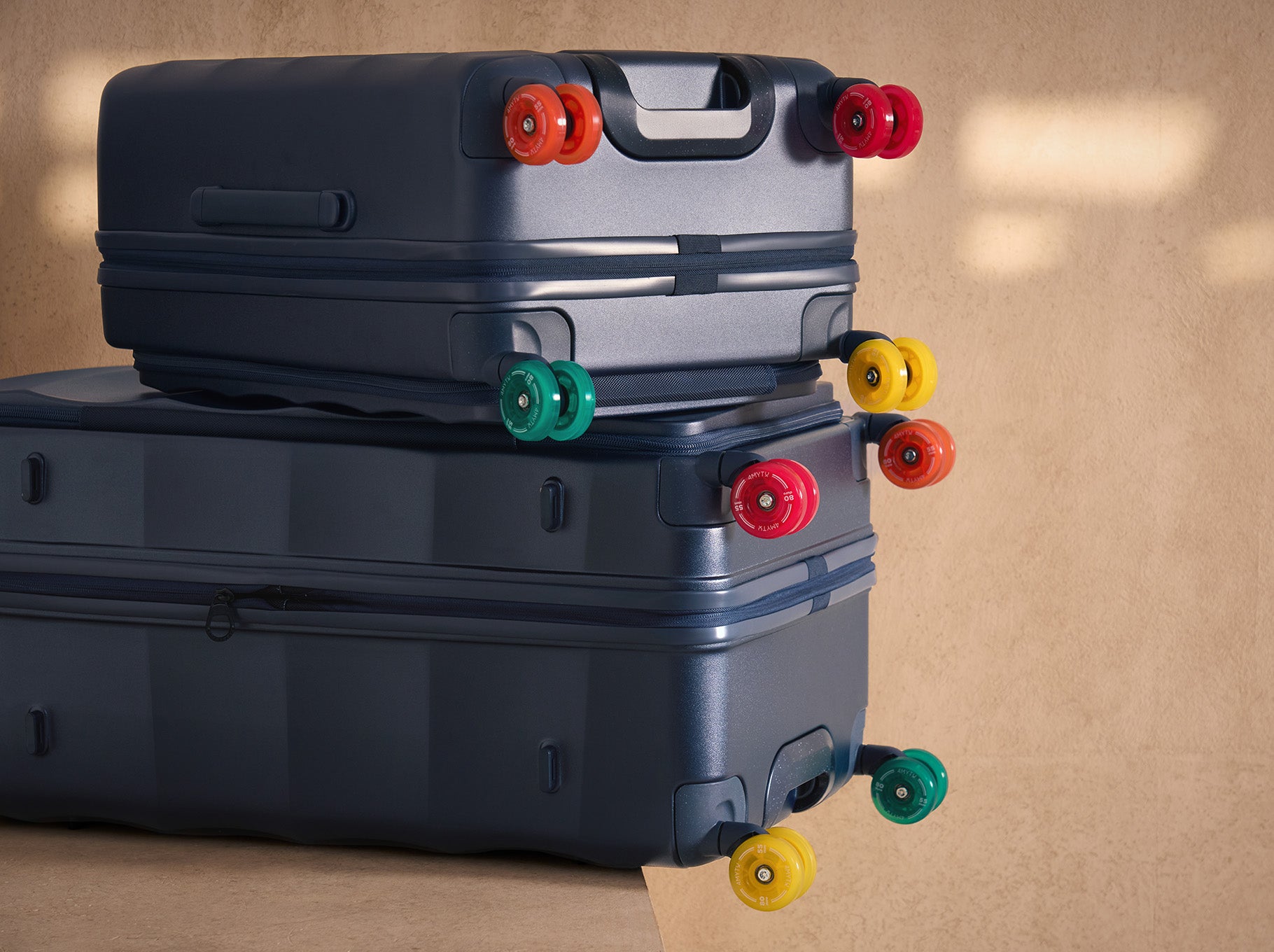Article: 4 Key Checked vs. Carry-On Luggage Rules Every Traveler Should Know Before Packing

4 Key Checked vs. Carry-On Luggage Rules Every Traveler Should Know Before Packing
The wrong bag can turn a peaceful morning at the airport into a scramble of zipper-yanking and repacking. A few simple rules can help.
Why Knowing Luggage Rules is Non-Negotiable
Airports aren’t the place to gamble with guesswork. One overlooked rule can turn a smooth trip into a scramble in seconds.
You can reasonably expect some things that can go wrong:
- Unexpected charges: Some airlines charge for carry-ons or second bags, even on short flights.
- Last-minute repacking: Oversized bags often lead to gate-side unpacking or forced check-ins.
- Wasted time: Incorrect baggage can slow down check-in and security checks.
- Lost control: Being told to check a bag you planned to keep can disrupt your routine and delay access to important items.
The fix is simple:
- Look up your airline’s baggage policy before packing
- Check size and weight limits for both carry-on and checked bags
- Use a scale at home
- Keep key items in bags that will stay with you
Key Rule 1: Mastering Size and Weight Restrictions
Airlines set baggage limits for good reasons—safety, space, and speed. But these rules aren’t always obvious. Knowing the limits helps you avoid trouble before you even reach the airport.
Think of this as your pre-check list:
- Size matters: Airlines list exact size limits for both carry-ons and checked bags—usually counting the wheels and handles too.
- Weight counts: Standard weight limits vary, but many airlines stick to 50 pounds for checked bags. Carry-ons often don’t have a formal weight limit, but they must be easy to lift into the overhead bin.
- Exceeding limits costs money: Heavier or oversized bags trigger extra fees. Some airlines won’t even accept bags over a certain weight.
Before leaving home:
- Weigh each bag with a travel scale
- Measure all sides, including protruding handles
- Review your airline’s current policy
Carry-On Luggage: Navigating Cabin-Friendly Dimensions
A good carry-on keeps up at every turn—through tight gates, quick layovers, and full overhead bins.
Here’s what makes a carry-on truly cabin-ready:
- Your bag should slide easily into the overhead bin or under the seat.
- Soft bags are easier to squeeze into tight spots, but hard-shell ones do a better job protecting your laptop and other breakables.
- Keep heavier items near the wheels to keep the bag stable while rolling.
If you want to pack more into less space:
- Roll clothes instead of folding
- Use packing cubes for neatness
- Wear bulky shoes and coats on the plane
With smart choices, a carry-on becomes more than just a bag—it becomes your travel base.
Checked Luggage: Understanding Allowances for Larger Bags
Checked bags offer freedom, which, however, comes with fine print:
- Fee structures vary: Some tickets include one checked bag. Others charge for everything. The first bag is usually cheaper. A second or third adds more cost.
- Weight and size still matter: Most airlines cap standard checked bags at 50 pounds. Go over that, and fees climb. Some airlines won’t take bags over 70 pounds at all.
- Different airlines, different rules: International flights often have more generous baggage policies. Domestic budget carriers tend to be stricter.
If you’re checking a bag:
- Weigh it after packing
- Look at your ticket type and route
- Check the airline’s fee chart
The right checked bag can take pressure off your carry-on—and give you space to bring home more than you left with.
Key Rule 2: What Can (and Can't) You Pack? Item Prohibitions
Packing isn’t just about space—it’s about following the rules.
Carry-on bags face the most limits.
- Liquids must be in containers no larger than 100ml. All must fit into a single, clear quart-sized bag.
- Common items like toothpaste, hand cream, and gel packs count.
- Laptops and tablets need to come out at screening.
- Sharp tools, scissors, or even metal nail files may be rejected.
- Some batteries—especially high-capacity power banks—must stay in your carry-on, not in checked bags. Others may need approval at the gate.
Checked bags allow more freedom, but there are still rules.
- You can pack large bottles, sports gear, and kitchen tools.
- However, many lithium batteries are banned from cargo holds.
- Electronics with sealed-in batteries may need special packing or labels.
Each country and airline has its own list. Before flying, check both. A few minutes online can help you avoid delays and protect your belongings.
Key Rule 3: The Financial Factor – Understanding Luggage Fees
A cheap ticket can get expensive fast once baggage fees come in. Many travelers overlook them, only to be surprised at the airport.
Some airlines charge for every bag—even carry-ons. Others include one or two checked bags, depending on the route or fare class. Since there’s no single rule across carriers, it’s easy to misjudge the total cost.
To avoid that:
- Pay for bags when you book. It’s often cheaper than waiting until check-in.
- Check your fare type. Basic economy often excludes baggage, while higher fares may include more.
- Use your airline’s baggage calculator. It shows fees based on your destination and number of bags.
Costs rise quickly for international routes, large families, or extra gear. A few minutes of research helps you stay within budget and avoid surprises when you check in.
Checked Bag Fees: What to Anticipate and Potential Savings
Checked luggage costs more than most people expect. The first bag usually falls between $25 and $35. A second may jump to $40 or higher. Add a third, and the fees rise fast. For a family or a long trip, the total can become a serious part of your travel budget.
But not all travelers pay the same. Frequent flyer programs often include one or more free checked bags. Certain credit cards also cover baggage fees as a benefit. Travelers in business class or premium economy usually get at least one bag included in the ticket price.
Families or groups can sometimes save more by packing smarter. One large suitcase may cost less than two smaller ones. If your airline charges per bag—not per weight—combining items could cut fees in half. Always weigh your luggage and compare costs before paying online. A few minutes of planning may save more than you think.
Key Rule 4: Weighing Accessibility, Convenience, and Security
The way you pack shapes how your trip feels—fast and flexible, or slow and stressful. Carry-on luggage keeps essentials close and helps you move quickly, especially on short trips or tight connections. But it comes with limits: smaller space, stricter rules, and the overhead bin shuffle.
Checked luggage lightens the load at the airport and makes room for extras, but you trade control for convenience. Bags may be delayed, and fragile items risk rough handling.
There’s no one-size-fits-all answer. A solo weekend trip calls for different choices than a two-week family vacation. Before packing, think about your route, how you like to move, and what you need access to. The right bag should fit your rhythm—not force you to change it.
Your Bag, Your Move
Packing isn’t just a step on your to-do list—it’s a strategy. Every zipper, pocket, and choice you make has ripple effects: shorter wait times, fewer surprise fees, less mid-trip frustration. The right bag won’t call attention to itself, but you’ll notice how much smoother everything feels. When your luggage works with you—not against you—you spend less time managing it, and more time enjoying the trip.




Leave a comment
This site is protected by hCaptcha and the hCaptcha Privacy Policy and Terms of Service apply.